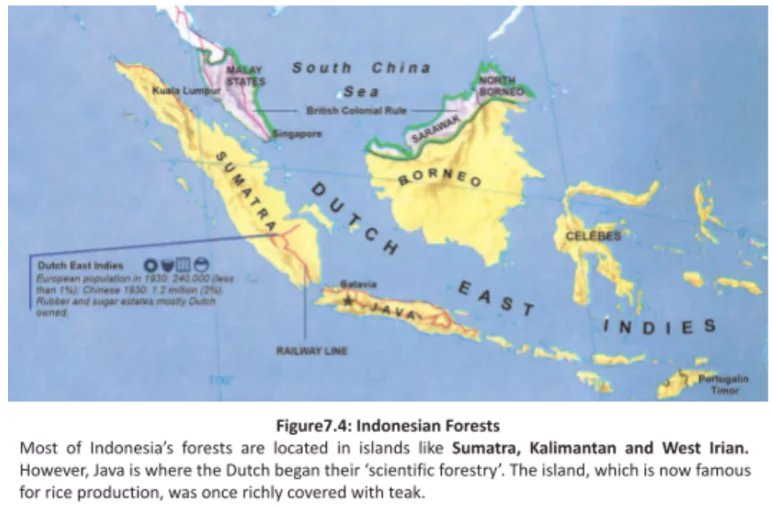![]() 19 Jul 2024
19 Jul 2024
Java in Indonesia is now famous as a rice-producing island. But once upon a time, it was covered mostly with forests (Refer to Figure 7.4). The colonial power in Indonesia was Dutch, and they started forest management. Like Britishers, they wanted timber from Java to build ships.

In 1600, the population of Java was estimated at 3.4 million. There were many villages in the fertile plains, as well as many communities living in the mountains and practicing shifting cultivation.
Indigenous Community: The Kalang community of Java was of skilled forest cutters and shifting cultivators.
Colonial Control: In the 19th century, when it became important to control territory and not just people, the Dutch enacted forest laws in Java, restricting villagers’ access to forests.
Challenge to Forest Ownership: Around 1890, Surontiko Samin of Randublatung village, a teak forest village, began questioning state ownership of the forest.
World Wars: At this time, in India, working plans were abandoned and the forest department cut trees freely to meet British war needs.
Shifting Paradigms: Since 1980s, governments across Asia and Africa have begun to see that scientific forestry and policy of keeping forest communities away from forests has resulted in many conflicts.
| Must Read | |
| Current Affairs | Editorial Analysis |
| Upsc Notes | Upsc Blogs |
| NCERT Notes | Free Main Answer Writing |
Dutch exploitation decimated Java’s forests, a stark reminder of the destructive potential of unchecked resource extraction. Thankfully, a paradigm shift is underway. By recognizing the pivotal role of local communities in forest conservation, governments are fostering collaborative approaches. This empowers people to protect sacred groves and patrol their forests, offering a promising path to forest restoration and sustainable management.
| Related Articles | |
| The Dutch in India and Danish | Forest In India |
| POPULATION IN INDIA | Agriculture Sector In India |
<div class="new-fform">
</div>